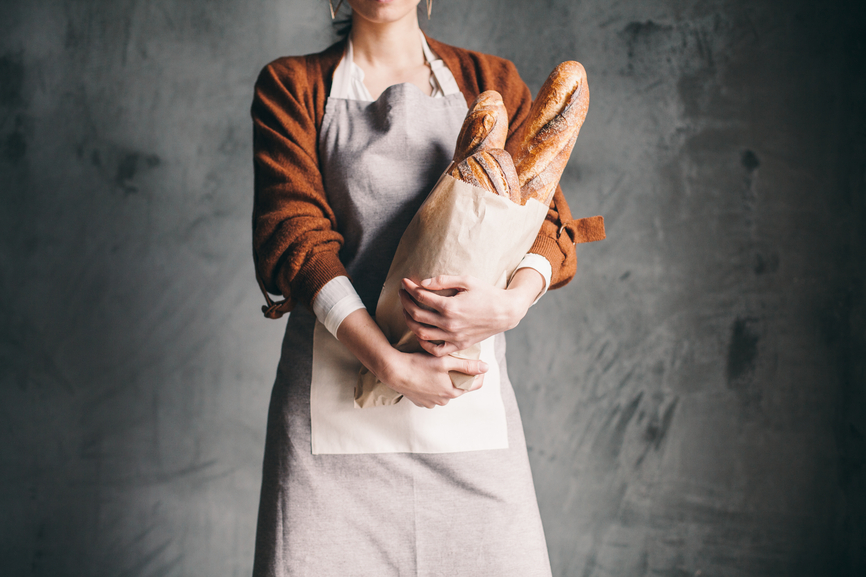 It seems everyone is going “gluten-free” these days, and special (expensive!) gluten-free foods are popping up all over the grocery store. Should you be cutting it out too?
It seems everyone is going “gluten-free” these days, and special (expensive!) gluten-free foods are popping up all over the grocery store. Should you be cutting it out too?
Those with celiac disease MUST go 100% gluten-free, because when they consume even a tiny fraction (like the invisible amount that might be left on a knife used to cut a slice of bread), their body recognizes this tiny molecule as a foreign invader and mounts a full on war in the digestive tract.
However, there are millions of people who do not have celiac disease yet claim to feel better on a gluten-free diet. While there is little by way of scientific proof to show you’re better off sans bread, people swear it helps alleviate symptoms like bloating, eczema, headaches and brain fog.
Why might this be? Gluten – the protein found in wheat, barley and rye – is pretty ubiquitous in the American diet. It’s found in obvious things like bread, bagels, cereal, pasta, muffins, cookies and crackers. But it’s also found in less obvious things like some soups, seasonings, and sauces.
Much of the wheat we consume has been genetically modified, doused with pesticides, stripped of nutrients, and bleached to look pretty so that it hardly resembles a healthy whole grain. Interestingly, some people claim to be able to tolerate the gluten they eat in Europe, which may be because it’s actual wheat, planted with the same seeds that have been passed on for generations.
I’m not sure where I stand on the whole gluten intolerance trend, but I’ve seen many clients improve without it. And I can speak from personal experience that it has helped me to at least cut back.
During my 2nd pregnancy, I was getting daily headaches well into my 16th week. It came up in conversation that going gluten-free helped my nutritionist friend get rid of her headaches, so I thought I’d give it a try. Within 2 days, the headaches were gone. And they stayed gone. So I continued with my gluten-free diet throughout my pregnancy and literally never got another headache, save the occasional sinus pain.
So should you try it? If you do, I recommend you start with a few things in mind.
• Cut out gluten to make room for more whole foods. We often snack on gluten-containing foods like crackers, cookies, and bread, because it’s convenient, and the quick surge in our blood sugar gives us that temporary “high.” So when you cut these things out and replace them with healthy snacks like fresh apples, almond butter, baby carrots, hummus, Greek yogurt, oatmeal, hard-boiled eggs, or (*shameless plug*) Nourish Snacks – which happen to be gluten free! – your body is getting way more fiber, protein, vitamins and minerals that actually fuel you rather than drag you down.
• Just because it’s gluten-free, does not mean it’s healthy. Don’t fall for the gluten-free, processed crap in the grocery store. Most of it is loaded with potato starch, rice flour, and corn. It’s not that these things are inherently bad for you, but they’re not part of a whole foods diet, and they certainly aren’t needed. Plus, if you start a habit of eating them, your waistline (and your wallet!) will suffer.
• Don’t be a freak about it. Just because you’re going gluten-free doesn’t mean you have drive your waiter crazy obsessing over cross-contamination. (Unless of course you have celiac disease or a super-sensitive intolerance – I’m only talking to the dabblers here.)
It might be helpful to keep a journal and document how you feel each day. If nothing else, maybe you’ll learn some new healthy recipes along the way!
